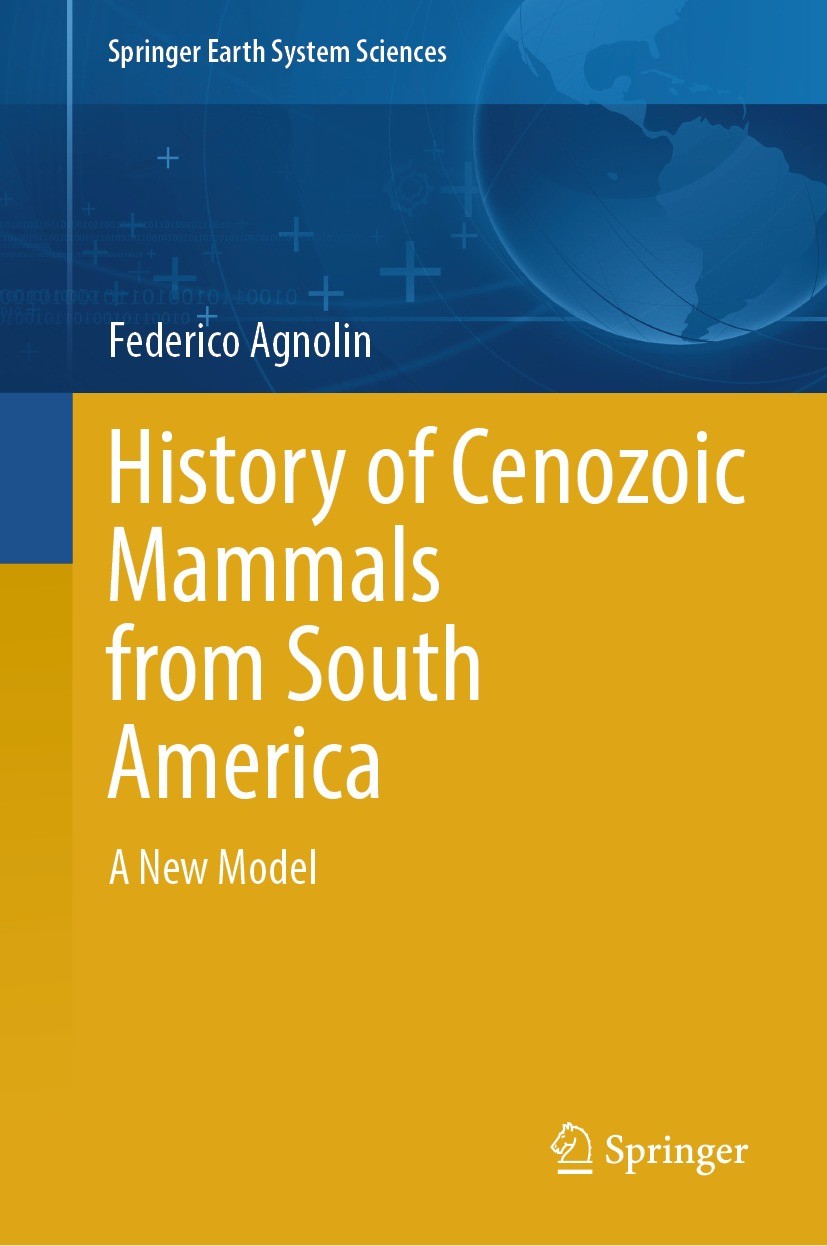| 书目名称 | History of Cenozoic Mammals from South America | | 副标题 | A New Model | | 编辑 | Federico Agnolin | | 视频video | http://file.papertrans.cn/428/427530/427530.mp4 | | 概述 | Demonstrates that the nature and evolutionary history of South American vertebrates is complex.Examines Palaeobiogeographic model of vertebrate settlement of South America.Southern landmasses may have | | 丛书名称 | Springer Earth System Sciences | | 图书封面 |  | | 描述 | The Cenozoic history of South America faunas mainly rests on the evidence yielded by the study of fossil mammals. Following the seminal work of William D. Matthew, George G. Simpson established the slogan “Splendid Isolation” for describing the evolutionary history of South American faunas. He envisaged South America (as well as other Southern Hemisphere landmasses) as dead ends in the evolution and geographical expansion of animals and plants that since the Mesozoic come in successive migratory waves from the North..More than 40 years passed away from the last important contribution by Simpson (1980). Since then, in spite to the exponential increase in biological, paleontological and geological knowledge, and an incredibly new number of fossils, his scheme remained almost unpolluted and most recent books regarding the palaeobiogeography of South American vertebrates follow this paradigm nearly without criticism..However, the factthat South America was joined to Africa, Australia, Antarctica and India during most of the Cretaceous, and that it was still connected Australia (via Antarctica) and probably Africa up to the Paleogene, together with the large number of shared biotic comp | | 出版日期 | Book 2024 | | 关键词 | Cenozoic history; Paleogene; fosil; South America; paleobiogeographical | | 版次 | 1 | | doi | https://doi.org/10.1007/978-3-031-56266-2 | | isbn_softcover | 978-3-031-56268-6 | | isbn_ebook | 978-3-031-56266-2Series ISSN 2197-9596 Series E-ISSN 2197-960X | | issn_series | 2197-9596 | | copyright | The Editor(s) (if applicable) and The Author(s), under exclusive license to Springer Nature Switzerl |
The information of publication is updating

|
|
 |Archiver|手机版|小黑屋|
派博传思国际
( 京公网安备110108008328)
GMT+8, 2025-12-28 16:09
|Archiver|手机版|小黑屋|
派博传思国际
( 京公网安备110108008328)
GMT+8, 2025-12-28 16:09


